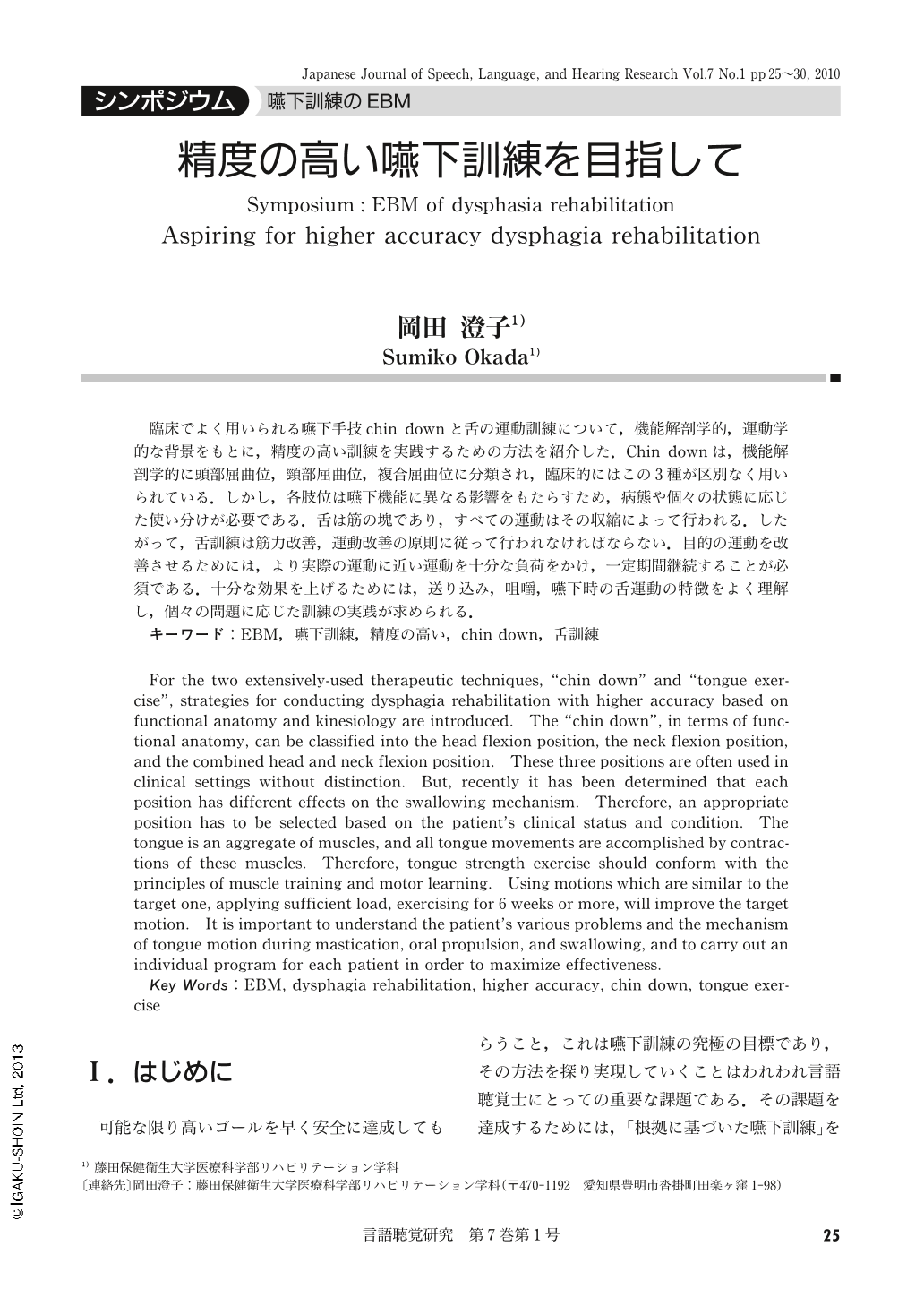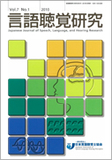Japanese
English
- 有料閲覧
- Abstract 文献概要
- 1ページ目 Look Inside
- 参考文献 Reference
臨床でよく用いられる嚥下手技chin downと舌の運動訓練について,機能解剖学的,運動学的な背景をもとに,精度の高い訓練を実践するための方法を紹介した.Chin downは,機能解剖学的に頭部屈曲位,頸部屈曲位,複合屈曲位に分類され,臨床的にはこの3種が区別なく用いられている.しかし,各肢位は嚥下機能に異なる影響をもたらすため,病態や個々の状態に応じた使い分けが必要である.舌は筋の塊であり,すべての運動はその収縮によって行われる.したがって,舌訓練は筋力改善,運動改善の原則に従って行われなければならない.目的の運動を改善させるためには,より実際の運動に近い運動を十分な負荷をかけ,一定期間継続することが必須である.十分な効果を上げるためには,送り込み,咀嚼,嚥下時の舌運動の特徴をよく理解し,個々の問題に応じた訓練の実践が求められる.
For the two extensively-used therapeutic techniques, "chin down" and "tongue exercise", strategies for conducting dysphagia rehabilitation with higher accuracy based on functional anatomy and kinesiology are introduced. The "chin down", in terms of functional anatomy, can be classified into the head flexion position, the neck flexion position, and the combined head and neck flexion position. These three positions are often used in clinical settings without distinction. But, recently it has been determined that each position has different effects on the swallowing mechanism. Therefore, an appropriate position has to be selected based on the patient's clinical status and condition. The tongue is an aggregate of muscles, and all tongue movements are accomplished by contractions of these muscles. Therefore, tongue strength exercise should conform with the principles of muscle training and motor learning. Using motions which are similar to the target one, applying sufficient load, exercising for 6 weeks or more, will improve the target motion. It is important to understand the patient's various problems and the mechanism of tongue motion during mastication, oral propulsion, and swallowing, and to carry out an individual program for each patient in order to maximize effectiveness.

Copyright © 2010, Japanese Association of Speech-Language-Hearing Therapists. All rights reserved.


